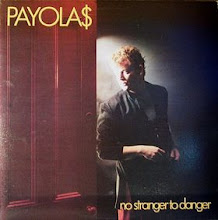 Before I embarked on this review of the film The Graveyard Shift (Singleton 1990), I decided to go back and reread the Stephen King short story upon which the film is based. The story of the same name is featured in King’s compilation of short stories titled Night Shift, and was originally published by itself in 1970, long before King hit the big time and became not just a famous writer, but a brand of horror.
Before I embarked on this review of the film The Graveyard Shift (Singleton 1990), I decided to go back and reread the Stephen King short story upon which the film is based. The story of the same name is featured in King’s compilation of short stories titled Night Shift, and was originally published by itself in 1970, long before King hit the big time and became not just a famous writer, but a brand of horror.The short story is not one of King’s better works, though considered in the context of the early years of his career, it does offer insight into how he has developed as a writer. The story is focused on the tension between a drifter named Hall and the foreman at a textile mill where Hall is currently employed. Over the course of a few days working the graveyard shift as part of a clean up crew, the tensions build into a murderous rage which explodes in a mysterious subbasement where rats have not only been breeding, but have mutated into hideous, man-eating monsters.
The story is slight in plot, character, and thematic complexity, but King’s distinctive voice is in full force in the story, as he blends Edgar Allen Poe style horror with the pulpier fare of the classic EC comics. As such, “The Graveyard Shift” might have worked as a short film, and would have been right at home as part of a Creepshow sequel. As the basis for a feature film however, it is hard to see what could be done to stretch the material beyond the twenty minute mark. That Ralph S. Singleton’s film works at all is a miracle, but is doesn’t change the fact that the finished film is a failure overall, never finding an strong enough approach to adapt the material for feature length.
As in the short story the film is based on, the film focuses on a drifter named Hall (David Andrews, Terminator 3: Rise of the Machines [2003]), who arrives in a town where the only work to be found is at the local textile mill owned by Warwick (Stephen Macht, whose credits mostly seem to be from television), a greedy and corrupt man who has no problems with extorting labour and other favours out of his employees. While Hall strikes up a romance with his co-worker Jane (Kelly Wolf, Less Than Zero [1987]) and makes enemies with other locals, Warwick is faced with the threat of his mill being shut down due to various building and health code violations. Bribing his way into getting extra time to clean the place up, Warwick drafts Hall and Jane into the graveyard shift clean up crew. As tensions heighten amongst the crew, people start to disappear and a mysterious subbasement is discovered. Does the subbasement have anything to do with the mill’s massive rat population? Only a trip down holds the answers.
While the film takes the general premise of the short story, it abandons the short story’s focus upon the mental state of Hill and his murderous rage against Warwick. The relationship between the two this time out is more clean cut: Hill is decent average-Joe here, while Warwick has been transformed from an inept boss who likes to lord his limited power over people into a cartoon-ish villain, openly and knowingly playing God with people’s lives through running the town's only source of employment. In place of this missing psychological thrust, the film instead chooses to reflect on the recession era America it was produced in (which does allow the film to feel oddly timely with the current recession), with the presence of the rats scourging for scraps mirroring the desperation of the town folk in need of work, and their willingness to do whatever it takes to even just get a scrap.
It is this sense of working class desperation and impoverishment that the film captures perfectly, at least in the production design and photography. The town in this film is a decaying rural hell, mixing dilapidated industrial structures with just enough gothic elements without going overboard. The film is successful enough in creating its impoverished world that by the time the monster bats and rats come out to play, their existence seems almost natural.
Unfortunately, the production design and photography is about all that works in the film. With our characters reduced to stock types of hero/villain/hero’s girlfriend/etc., it is natural to assume the filmmakers would be to amp up the man vs. monster rat action. The film though is structured like a slow burn horror film, focused on character and punctuated with moments of jump scares. The problem is that there is nothing to burn here: we know the direction the film is heading from the moment it begins, and in the absence of well rounded characters, the film feels padded as it delays the inevitable (or, more precisely, the predictable), with repetitive scenes and odd tangents that go nowhere.
Take the character of Tucker Cleveland, the exterminator who we see working on the rat problem in the mill. As played by sci-fi and horror genre veteran actor Brad Dourif (Dune [1984]; Heaven’s Gate [1980]), the character is bizarre creation with no basis in King’s story, rambling on about Vietnam and the pleasures of his job. The character is one of the most entertaining elements in the film, but at the same time, one that is indicative of the film’s problems: he does not really have much of a place in the film. He adds nothing to the narrative, and if his scenes were deleted, they would have no impact upon the finished film. I love a good tangent, and as it stands, I am happy that these scenes are in the film,as Dourif is always a joy to watch, but the character is a clear indicator for the amount of padding included in the finished film.
The film’s best weapon in combating boredom however is Stephen Macht, who in his villainous role decides to chew as much scenery as possible. As noted, the character isn’t even remotely close to being anything more than a caricature of an evil boss, but Macht clearly enjoys every sleazy moment he is given to play, especially when his character (SPOILERS) is allowed to go completely crazy at the film’s conclusion. (END SPOILERS) Part of this enjoyment comes simply from the fact that Hall by contrast is such a blank slate of a lead character, which is in no way the fault of actor David Andrews, who gives a fine performance. The material Andrews is given is simply limited, and it is hard to imagine any actor being able to make anything out of the character. Fairing even worse is Kelly Wolf, who has absolutely nothing to do throughout the whole film.
Most disappointing however is the film’s climax in the subbasement, as the characters start to behave irrationally, and the final confrontation with our monstrous bat/rat thing is given the short end of the stick after an entire film’s builds up. The direction is haphazard and the sequence is poorly edited, undermining any possible tension and ending the film on a somewhat sour note. I understand trying to keep a monster in the shadows, but when your film is about a giant mutant bat/rat, then the expectation is that the audience will see it head on at least once. As it stands, the limited presence of the monster seems to be motivated by a lack of adequate special effects rather than any artistic reason.
While Graveyard Shift is a disappointment and should not be at the top of anyone’s Halloween viewing list, the film does hold a small amount of charm and some treats for horror film fans, including an early performance from Andrew Divoff of Wishmaster (1997) fame. Furthermore, it can at least be said that it is not the worst film ever produced based on a Stephen King work, and for those who make it to the end of the film, the closing credit’s music is cool and catchy. If you are holding a marathon of films based on the works of Stephen King, you could do worse than slapping Graveyard Shift in the middle of the pack. Just don't kick off or end the marathon with the film.


No comments:
Post a Comment
What Is Your Cinematic Experience? Post Here!